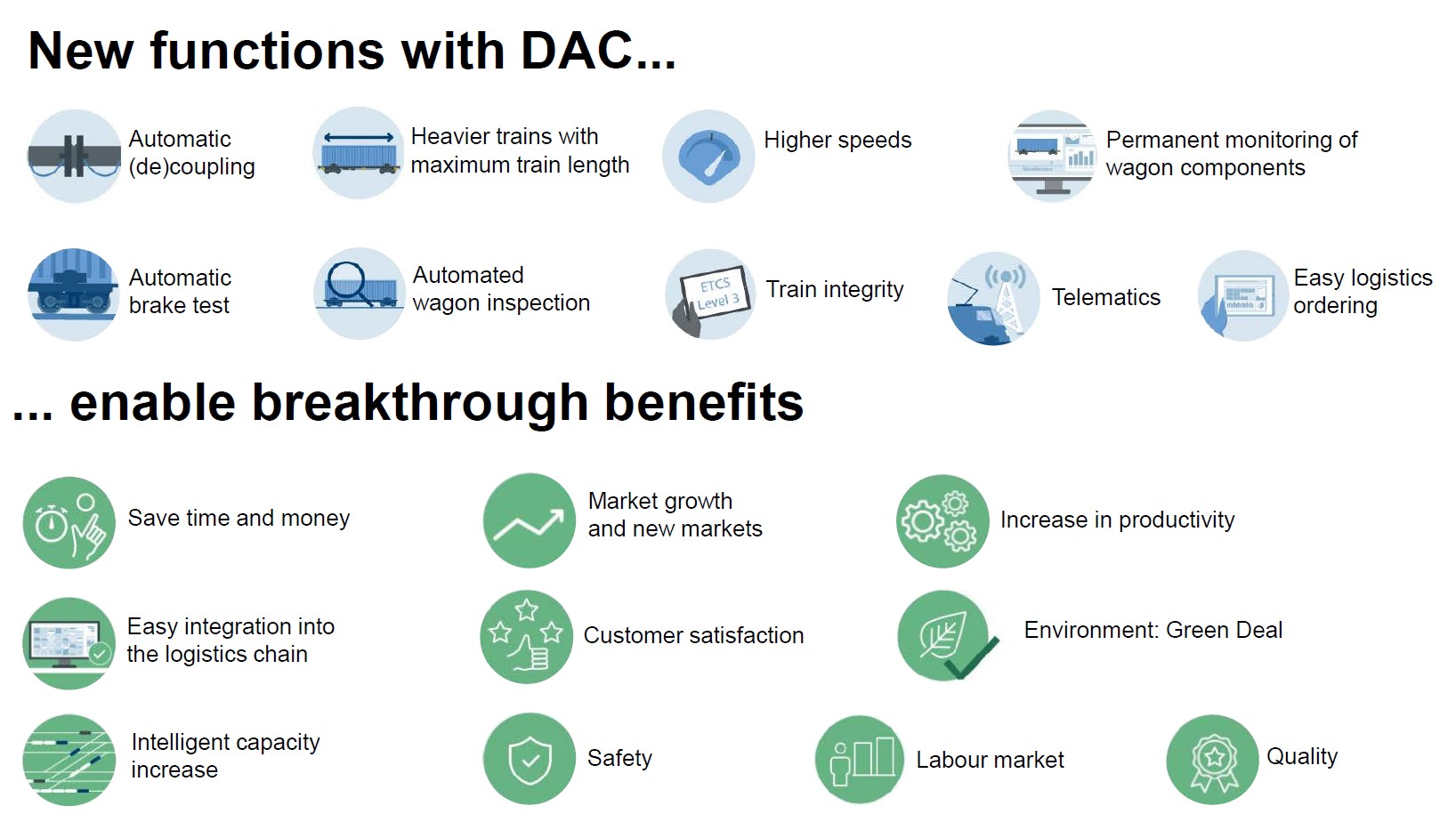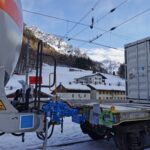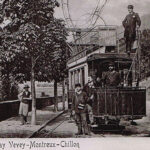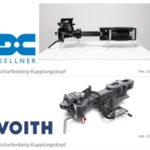The digital automatic coupler (DAC) is much more than what its name suggests. It is the basis for the complete digitalisation and automation of rail freight transport in Switzerland – and thus a far-sighted investment in the future.
Rail freight 4.0
We at VAP are committed to a competitive rail freight system in order to ensure that our members have a free choice of transport mode. To this end, we are active at various levels. One is the digital automatic coupling, or DAC for short. With this, European rail freight can reach the next dimension of modernisation.
The DAC allows automatic coupling, as the name suggests. But that is by far not all. We should rethink Swiss rail freight transport with its cross-system processes as a whole. In this view, the DAC enables a continuous power and data transfer in the train. Such a transfer is the prerequisite for the digitalisation and automation of rail freight transport. It is tantamount to a quantum leap in quality and customer benefit, as all data is available digitally via all interfaces and logistics participants. Digital train control will also lead to a groundbreaking flexibilisation of network use and thus to a significant increase in network capacity. This offers rail freight transport the unique opportunity to play a key role in multimodal logistics.
Genuine innovation for 100 years
The last real innovation in European rail freight transport was electrification. It was 100 years ago. As a result, the competitiveness of rail freight has steadily declined. With the investment in the DAC, rail freight transport can now catch up on several stages of development at once. Because it offers new functions with groundbreaking advantages (cf. Figure 1).
Figure 1: The DAC brings more benefits than the automation of the coupling process.
Rail freight transport as the backbone of supply
Rail freight transport is a central component of the supply of goods. In Switzerland alone, we expect freight transport volumes to grow by 30 percent by 2050. Transport capacities on road and rail are limited. Capacity expansion is mainly possible through improved interfaces of the multimodal logistics chains. And rail freight transport also has a lot to offer in terms of sustainability. Transport accounts for one third of greenhouse gas emissions each year. With the Green Deal in Europe and the long-term Climate Strategy 2050 in Switzerland, politicians have set ambitious goals. Low-emission rail transport is proving to be extremely competitive.
Support needed
Leading rail freight transport into a new era of progress with the DAC cannot be achieved single-handedly. Our industry is dependent on support. This includes, on the one hand, political commitment to ensure seamless coordination between Switzerland and the EU. On the other hand, it requires financial support. Because the industry players cannot bear the high initial investments alone. The added value of the DAC is designed for the long term and distributed among several market participants (cf. Figure 2). In our view, a deliberate start-up financing by the federal government is imperative. But the overriding goal must remain self-sustainability.
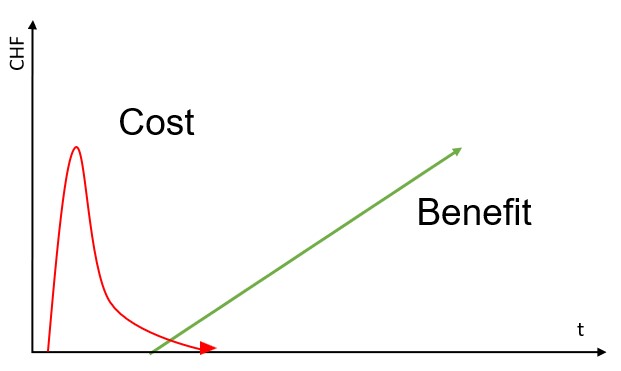
Figure 2: The benefits of the DAC can be seen in the long term and are distributed among several market participants.
Considered retrofitting
We consider it sensible to retrofit the existing fleet of wagons restrictively and to concentrate on young and market-relevant wagons. Wagon owners should only retrofit their wagons if this is cheaper over time than buying new ones. In addition, the Confederation should provide for a scrapping allowance for wagons that have not been written off, the use of which the wagon keeper can decide himself. The fact is that a large number of wagons must be converted in a coordinated manner within a short period of time so that the wagons remain compatible with each other and the DAC unfolds its added value as soon as possible.
You can find more on the subject in this presentation.

